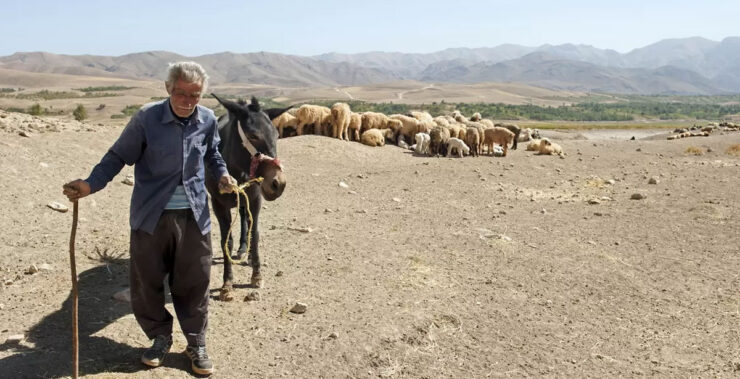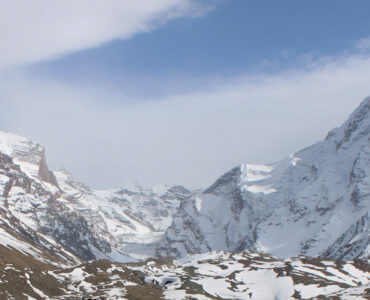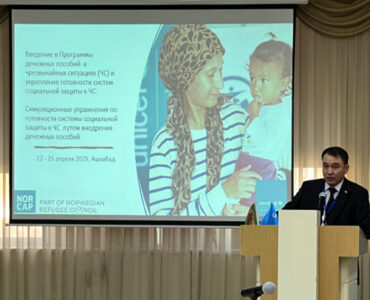The United Nations has updated the data on land degradation and desertification across the world, which was presented and discussed at a summit in Samarkand, Uzbekistan on November 13-17, 2023. According to the latest data around 420 million hectares (4.2 million m2) of land degraded between 2015-2019 across the world. Land degradation is a reduction or loss of the biological or economic productivity of land and it manifests itself in soil erosion, decline of soil quality and the overall health of the land.
Central Asia itself witnessed 20% of its total area degraded, affecting 18 million people. Human activities like deforestation, expansion of irrigated agriculture, increased water extraction, growth in the animal population, coupled with the arid climate, have led to soil depletion and land degradation.
Over 38% of the area in Central Asia faces drought, with more than half of the population (26.7 million people) exposed to drought across the region, ranging from 20.7% of the population in Turkmenistan to 89% in Kyrgyzstan. With 60% of the population across the region relying on agriculture as a primary income source, droughts affect freshwater availability and pose poverty and environmental migration risks.
Unsustainable irrigation farming, increased livestock grazing, and other human activities also contribute to sand and dust storms, impacting around 9% of the population (6.5 million). The Aral Sea catastrophe created 5.5 million hectares of salty desert that now emits more than 100 million tons of dust and poisonous salts every year, impacting health and decreasing crop productivity by eroding soil.
Land degradation and drought affect women and men differently based on their societal roles and cultural norms. Women are exposed to environmental issues more due to their engagement in rural activities and household chores. In contrast, men more often migrate to other countries for work. It is crucial to educate and prepare women and other vulnerable groups to cope with environmental challenges. Worsening climate, desertification, declining land productivity, and limited water supply, contribute to worsening living standards in the region further contributing to work-based migration.
Donate to support Turkmen analysts, researchers and writers to produce factual, constructive and progressive content in their efforts to educate the public of Turkmenistan.
SUPPORT OUR WORKLand Degradation Neutrality Program
Central Asian countries are making efforts to develop and promote sustainable land management practices with the support of the United Nations Convention to Combat Desertification (UNCCD). The organization has helped to prepare national action programs to combat desertification, to set Land Degradation Neutrality targets, to develop national drought policies and sand and dust storm management strategies. The region is also taking measures to offset the impacts of sand storms by updating legislation, afforesting areas, and creating protective forest belts.
The Land Degradation Neutrality Program, developed by UNCCD, aims to stop, avoid, and reverse land degradation processes. As Tajikistan sets their target, all Central Asian nations will become part of the program, making voluntary land restoration commitments. Turkmenistan has committed to greening 160 thousand hectares of desert areas, irrigated lands, and settlements by 2025. Furthermore, Turkmenistan was one of the first to ratify the UNCCD in 1996, and developed the National Action Plan to Combat Desertification in 1997.
The national plan highlights destructive impacts of desertification, which includes degradation of land, water, and other sources, causing ecological stress. In particular, utilization of water resources in Turkmenistan has been noted to already exceed the annual river flows, and the water volumes used for irrigation also exceed the recommendations. The report emphasizes the worsening of soil fertility and crop yield decline, and the reduction of forested areas. The National Action Plan has set several goals, among which are identification of criteria for land degradation, rehabilitation of degraded lands, and sustainable utilization of natural resources.
The national plan highlights the importance of local traditions and technologies for combating desertification. In 2021, there were plans to renew the National Action Plan to Combat Desertification, but as of 2023, it has not been updated and/or reviewed yet.






